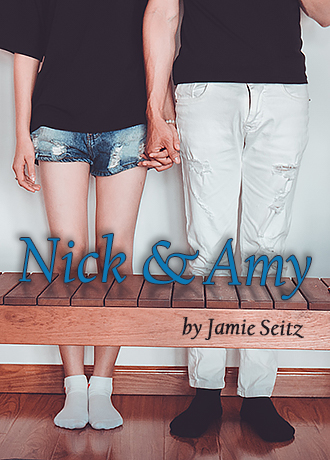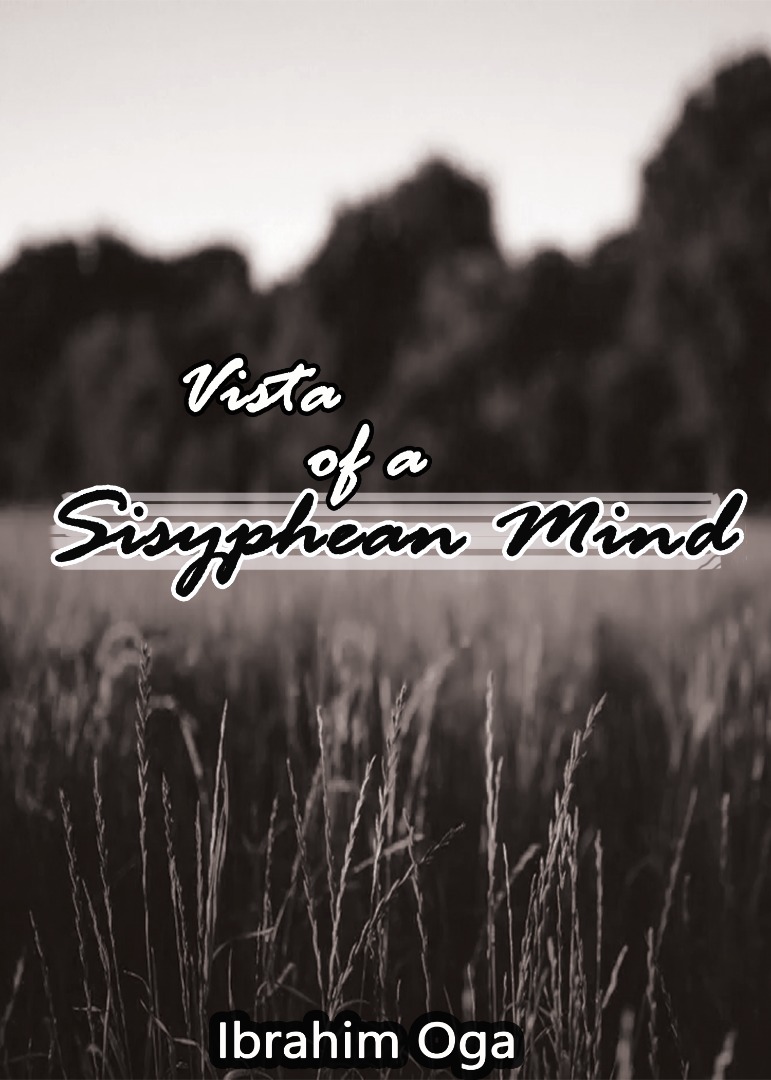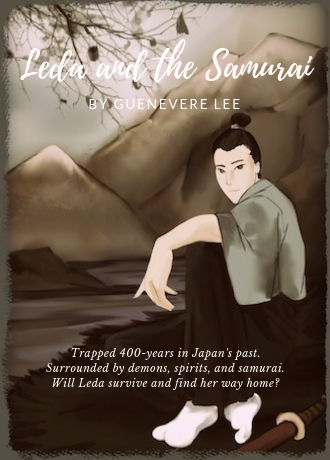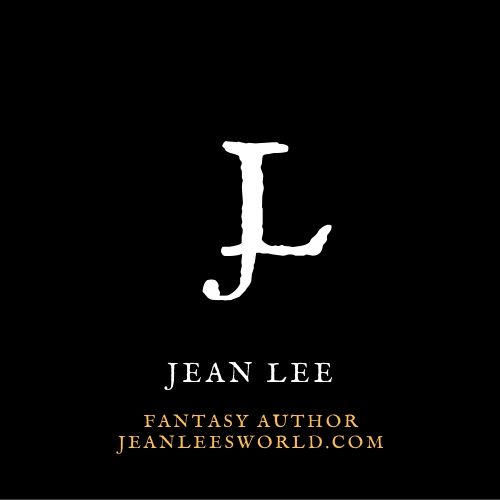Ah, January 2019, you give me so much hope for the coming year! We must begin with stories, for of course we must. Whether you love to read or to write, you are here to experience a story.
Have I got the stories for you!
Not just my own fiction–I’ll get to that. No, I’d like to introduce you to some wonderful indie writers who have been publishing on Channillo, a subscription-based publishing platform stocked with hundreds of stories written by talented writers from around the world. A few Channillo writers have stopped by to share their stories as well as why they feel serialized fiction is awesome for readers and writers alike.

Let’s start with some basics. Your name and title(s) on Channillo, please!

Jamie Seitz, Nick & Amy
Nick and Amy have been married for seventeen years which is a big deal because marriage is hard and messy and a fifty percent divorce rate and all. Nick and Amy live with their three kids in the middle of the United States, in a place like Iowa or Ohio or some other smallish, flat state with too many vowels, growing corn and soybeans, making it basically indistinguishable from any of the other states around it and uninteresting to anyone that didn’t grow up there. Nick is a procrastinator by nature which drives Amy crazy and Amy is spicy when she gets annoyed, which Nick adores. Together they are every marriage still trying to keep it real after almost two decades together while dealing with the not-so-fun parts of everyday life.

Ibrahim Oga, Vista of a Sisyphean Mind
Vista of a sisyphean mind series looks at the world in a unique perspective that is inspiring and motivating. The series is an exploration into the greatness of life.
*
*
*
*
*

Guenevere Lee, Leda and the Samurai
Leda, a young woman who moved to Japan to escape her abusive family, is slowly adjusting to her new life. She’s learning Japanese, making friends, and enjoying the summer festivals. On the day of the famous Tanabata festival, she finds a small shrine – but when she steps out of the shrine, she steps into Edo Era Japan.
Trapped 400 years in Japan’s past, what follows is half fantasy, half historical fiction. Is her coming here an accident? Or does it have something to do with the sudden appearance of European ships off the coast? Leda must discover how she ended up in this situation, and how she can get back home – or if she even wants to go back.
~*~
What made you choose publishing your work as a serial as opposed to a collection/novel?
Seitz: I do write novels in the traditional way, but writing Nick & Amy as a short story serial on Channillo gave me the opportunity to put something out every other week and get immediate feedback, which is not how writing a novel works. It’s quite refreshing to show the world what I’ve been working on for a week, get a laugh or two, and then do it all over again, while working simultaneously on a novel project that no one will see for months.
Oga: I choose to publish my work as a serial because I don’t have a complete manuscript. It gives me to the opportunity to share the parts I have written and see how interested people are in the work. Also, the pressure to publish the next installment in the series is a good motivation to write. Writers love deadlines.
Lee: I wanted to write a serialization. I guess I was inspired by things like manga, which have contained stories within an overall larger arc – and can go on indefinitely. I was also romanticizing the turn of the century, where authors like Charles Dickens would publish their novels as serials, sometimes not even knowing the ending or how long it would be.
I like how flexible serialization is.
~*~
I found this quote published in The Washington Post back in 2015, and I’d like you to comment on it:
Critics will undoubtedly moan that serialization would favor literature that’s heavy on cliffhangers and light on subtlety — and that it would corrupt more “serious” works. … Yet it requires the same characteristic any worthy novelist already seeks: momentum — a value that needn’t come at the expense of integrity. -Hillary Kelly, “Bring Back the Serialized Novel”
Seitz: There is truth that serial literature requires a reason for the reader to keep coming back for more, and maybe it works best as a cliff hanger for many serial stories. But at the heart of any story, a hard cover NYT Best Seller or an online serial, isn’t that exactly what every author is striving for? Spinning a story so thrilling or hilarious or mind-blowing that their reader can’t stop turning the pages though it’s hours past their bedtime.
Lee: You can’t tell me that modern novels don’t rely on cliffhangers. Have you ever read a YA novel? Look, cliffhangers aren’t bad, tension is not bad, motivating your readers to read the next instalment by getting them emotionally invested in a character is not bad.
A novel is like a movie, it comes out all at once. A serial is like a TV shows, building anticipation for the next chapter every week.
~*~
What benefits have arisen with plot, character development, and/or voice as you write a serial?
Seitz: I wanted to write Nick & Amy as a series of realistic fiction vignettes, every day funny stories about a regular married couple that don’t necessarily build on each other, but add another layer to the relationship with each new installment. As a serial, it’s been a fun way to play with building strong character development little by little in Nick and Amy, exposing deeper aspects of their marriage, relationships, and personalities through whatever daily adventure I’m putting them through.
Lee: I can experiment a lot more. I can have story arcs that focus on one particular character, or do a fun story that really has nothing to do with the overall arc, but adds to the atmosphere and the tension in the story. I feel like I just have so much more liberty telling this story.
~*~
What do you think draws readers to read serial (non)fiction?
Oga: Brevity. Our attention span is getting shorter as there are more and more things vying for it. People are drawn to serial works because the instalments are succinct. Serial successfully heighten pace and suspense. It enlightens and entertains long enough to hold the reader’s attention. It gives readers breaks between instalments to get them interested again. Each instalment starts strong, finishes strong, and creates suspense to intensify anticipation for the next.
People also like the participation in following a serial. Without the ability to read ahead, people are on the same page in terms of discussions of the work. Everyone tries to keep up with the reading in order to keep up with the conversations.
Lee: I think people like the anticipation. They like being rewarded every week with a new instalment. They like to wonder between instalments about what’s going to happen next. It’s a kind of interactive way to read a novel.
What advice do you have for fellow writers who want to give serialization a go?
As with anything artistic: just do it. If you don’t like it, or it fails, you have nothing to lose. It’s all experience that will help you with your next project.
~*~
Do you receive any reader feedback on your writing as it’s posted? What do you do with those reader comments?
Oga: Comments are important. Good or bad, they reveal how readers perceive my work. I cherish comments a lot because they help me better understand my expression of thought and plots. Comments help answer a lot of questions for me. Did my work inspired the emotions I hoped to raise? Did it enlighten the reader as I’d hoped? What is the reader expecting in the next installments? Is my work gripping enough?
I use comments to write better.
~*~
What advice do you have for fellow writers who want to give serialization a go?
Seitz: Give it a try! Serial fiction certainly wasn’t in my wheelhouse, but it’s helped me grow as an author, forcing me to work harder at making a story tight, concise, and well done in less time and in less words. It’s sharpened my skills as a writer and it’s been a fun learning curve. It certainly helps to do some planning beforehand to decide what you want the series to look like, but beyond that the freedom it gives you makes the writing rewarding. It helps to find it a good home for your serial, like Channillo, where the diversity of material, styles and authors is celebrated and embraced.
~*~
Many thanks to my fellow Channillo writers for their time! It’s important for us to challenge our writerly selves, just as it’s vital to expand our reading horizons. Channillo gives the opportunity for both. I do hope you’ll check them out…and perhaps my own book, too, nudge nudge. 😉

I’ve also got the latest edition of my newsletter available for viewing! If you haven’t yet, please subscribe here.
Okay, that’s enough self-promotion. Be sure to tune in this month for another author interview, some thrilling music, and, of course, storytelling.
Read on, share on, and write on, my friends!


Hmm… but do I want another subscription?
Sent from my iPad
>
LikeLiked by 1 person
I know it’s a tough call. 🙂
LikeLike
So much fantastic stuff to read and just not enough free/uninterrupted time to read it in.
LikeLiked by 1 person
I know just what you mean!
LikeLiked by 1 person
Great post with lots of good insight.
LikeLiked by 1 person
Thank you!
LikeLiked by 1 person
I must say your, ‘Be Proud to Fight Like Gal’ struck a chord. My dear wife, a formidable woman, fights like I a grizzly bear. I don’t stand a chance!
LikeLiked by 1 person
Indeed! A fierce female is not to be messed with. 🙂
LikeLiked by 1 person
Reblogged this on lampmagician.
LikeLiked by 1 person
Thanks Jean! Great post!
LikeLiked by 1 person
Thank you for participating!
LikeLike
“As with anything artistic: just do it. If you don’t like it, or it fails, you have nothing to lose. It’s all experience that will help you with your next project.”
This quote from Guenevere Lee really jumped out at me. It’s a great approach to much of life.
LikeLiked by 1 person
I agree! Thanks for reading. 🙂
LikeLiked by 1 person
I’m all for serialized novels. In a way, some podcasts are appealing to such interest. I do wonder how they’d fare in a time where everything is immediate and attention spans are short, but I hope this form of storytelling regains popularity.
LikeLiked by 1 person
You and me both! Thanks so much for stopping by. x
LikeLiked by 1 person
HAPPY NEW YEAR, JEAN LEE❣️
I like this post, thank you for letting us in on your chat with these writers, and introducing me to Channillo. Many years ago I tried my hand at having a serialized fiction blog. It was challenging because I felt that each installment couldn’t be just a scene but had to keep some tension and momentum going. I was too much of a “control freak” to write and post the surprises that showed up each week. Plus, I was new to blogging and only had, like, two followers who didn’t leave any feedback! Maybe I’ll try again😊. Or not.
LikeLiked by 1 person
Ah, I know what you mean! I’ve been seeing some interesting takes on serialized fiction, and that it has some awesome benefits as well as dangerous pitfalls. While it’s a neat method, it is NOT a method for everyone. 🙂 Happy New Year to you, my friend! xxxxxx
LikeLiked by 1 person
It’s how Charles Dickens wrote a lot of his stories – by serialising them, and if it’s good enough for Charlie… Thank you for a great article and a fascinating insight into the process by other authors.
LikeLiked by 1 person
And thank you for reading! xxxxxx
LikeLiked by 1 person
Always a pleasure!
LikeLiked by 1 person
I am all for serialized fiction! If I love a book, I want more, more, more of that world 🙂 Yet, some of my favorite novels are a stand alone kind of books. They just are.
Happy New Year, Jean! xxxxxxxxxxxxxxxxxxx
LikeLiked by 1 person
And the Happiest of New Years to you, Friend! xxxxxxxxxxxxxx
LikeLiked by 1 person
Thank you! ❤ xxxxxxxxxxxxxxxxx
LikeLiked by 1 person
Most welcome! xxxxxxxxxxxxxxxx
LikeLiked by 1 person
What an excellent post. Its so good to hear about alternative ways to produce a novel, and to see how other people have approached it. I’ll definitely be following this post up. You do just keep serving up useful goods, Jean.
LikeLiked by 1 person
Why thank you kindly, Friend! Of course, now the pressure’s on to keep the goods coming all through 2019…. 😉 xxxxxxx
LikeLiked by 1 person
There’s nothing like a deadline to keep us focused.
LikeLiked by 1 person
Indeed. 🙂
LikeLiked by 1 person
I appreciate Oga’s response to comments. I feel the same. Writing is often considered an individual effort. But I consider it more like a team sport. Readers are as much a part of the team as editors and publishers, and the writer him or herself.
Great recommendations for the new year!
LikeLiked by 1 person
That’s a great point! When we can listen to the readers and experience the story from their perspective, we can better understand where the story succeeds–and fails. Thank you!
LikeLike
Pingback: #AprilShowers Bring #AuthorInterviews! Let’s Wrap up #IndieApril with more #inspiring thoughts on #writing #serial #fiction & #publishing #indie #SerialReads on @_Channillo | Jean Lee's World